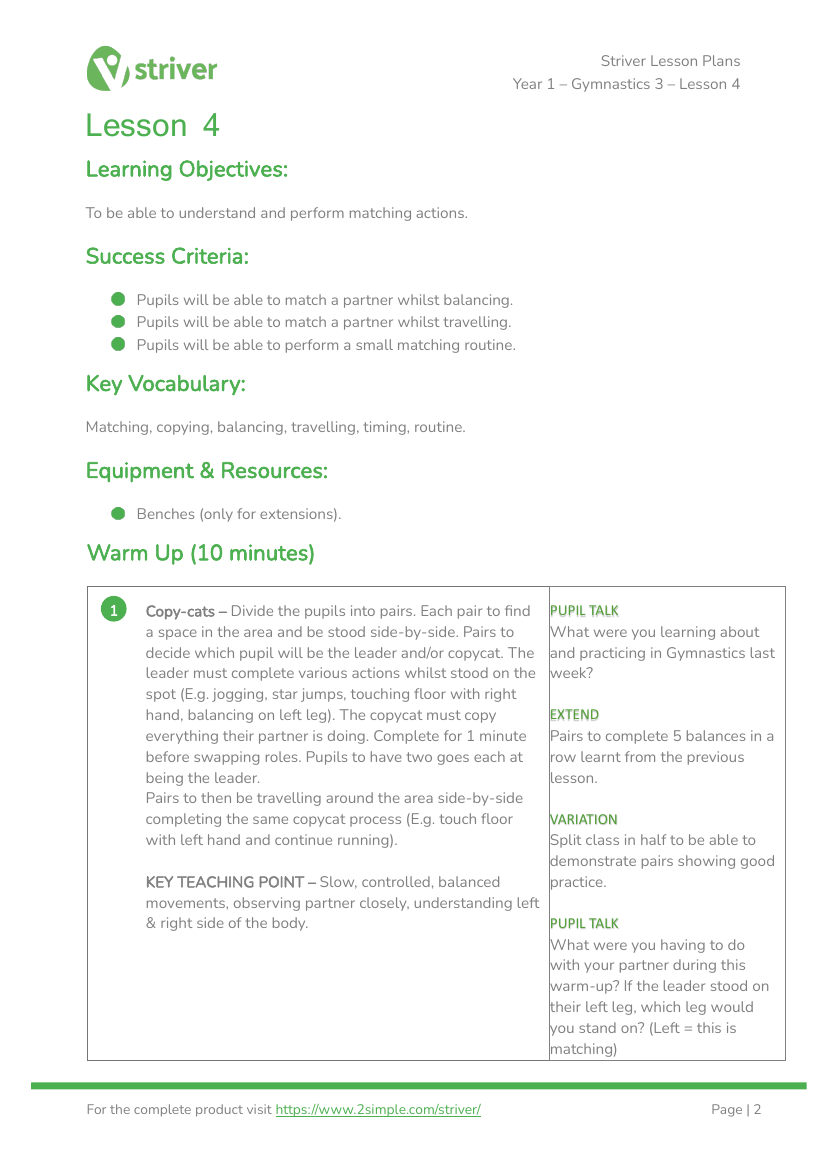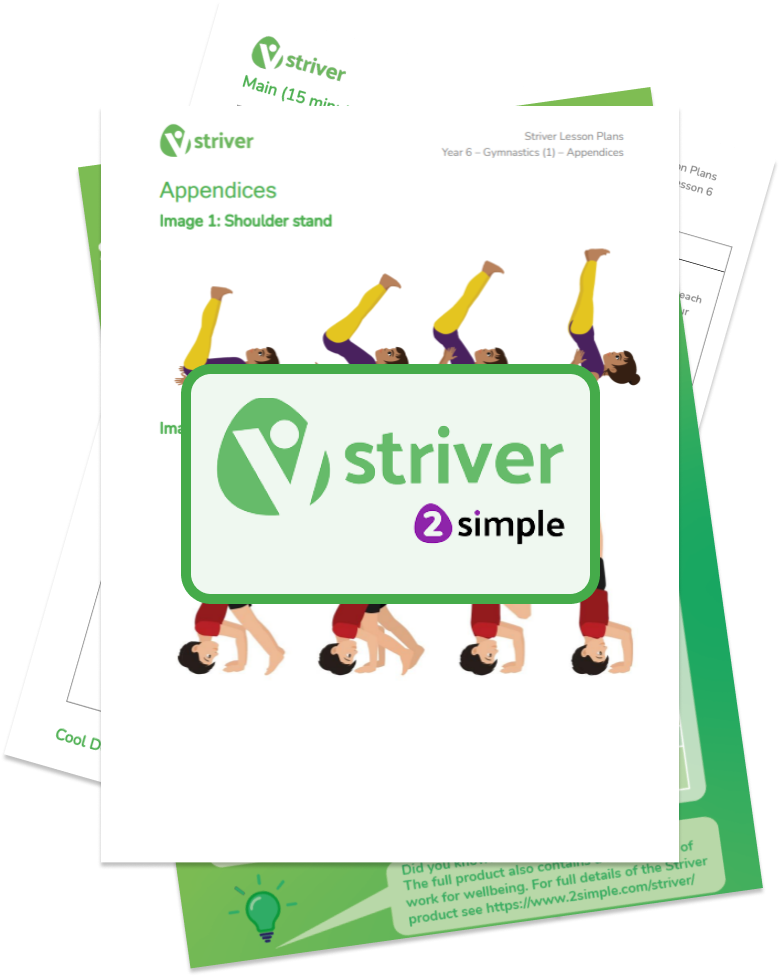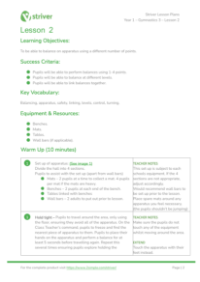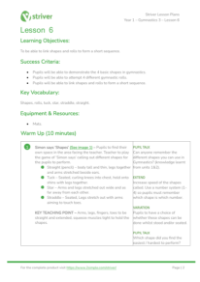Gymnastics 3 - Lesson 4

Physical Education Resource Description
In Year 1's Gymnastics 3, Lesson 4, the pupils are introduced to the concept of matching actions, a skill that involves mimicking a partner's movements while maintaining balance and coordination. The lesson's learning objectives are centered around understanding and performing these matching actions, which include balancing side-by-side with a partner, matching movements while traveling, and creating a small routine that incorporates these skills. The success criteria for the lesson are clear: pupils should be able to match their partner's actions while balancing and traveling, and successfully perform a matching routine. Key vocabulary terms such as 'matching', 'copying', 'balancing', 'travelling', 'timing', and 'routine' are established to help children grasp the concepts being taught. The lesson plan suggests using benches for extension activities but the main exercises can be performed without any equipment.
The lesson is structured into three main parts: a warm-up, the main activity, and a cool down. During the warm-up, pupils work in pairs to copy their partner's actions on the spot and while moving around the area, which helps them to understand the concept of matching and to identify the left and right sides of their bodies. In the main activity, the pairs work on matching balances, holding each position for 10 seconds, and then proceed to matching traveling exercises, ensuring their movements are in sync. Pupils are encouraged to communicate with each other and perform controlled movements. The lesson culminates in pairs creating and practicing a small routine that combines the balancing and traveling skills they have learned. The cool down involves a game where pupils must match the teacher's balances, with the last pupils remaining being deemed the 'matching winners'. Throughout the lesson, various extension and variation suggestions are provided to cater to different ability levels, and pupil talk is encouraged to reflect on their learning and performance.







